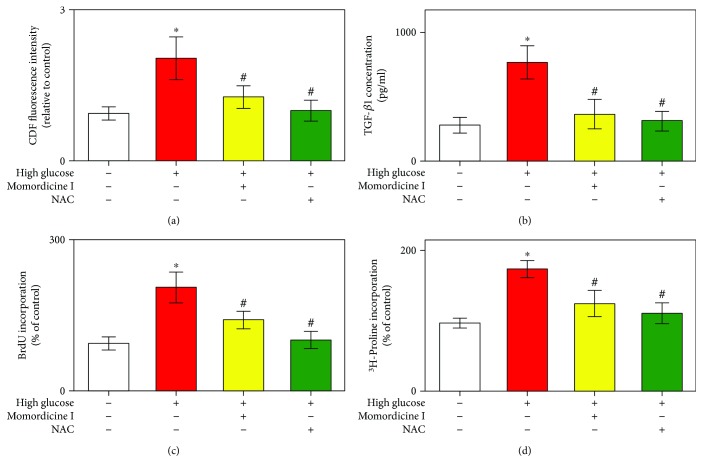Figure 3.
Momordicine I inhibits high-glucose-induced ROS in rat cardiac fibroblasts. (a) Effects of momordicine I on high-glucose-induced ROS generation. Cardiac fibroblasts were cultured in a normal-glucose medium or high-glucose medium for 30 min or preincubated with momordicine I (1 μM, for 12 h) or NAC (5 mM, for 30 min) and then stimulated with the high-glucose medium for 30 min. Column bar graph of mean cell fluorescence for DCF. The fluorescence intensities in the control cells are expressed as 100%. (b) Effects of momordicine I and NAC on the high-glucose-induced secretion of TGF-β1 in cardiac fibroblasts. Effects of momordicine I and NAC on high-glucose-induced fibroblast proliferation (c) and collagen synthesis (d). Cardiac fibroblast cells were cultured in the control medium or high-glucose medium in the absence or presence of momordicine I (1 μM) or NAC (5 mM) for 24 h. Results are presented as mean ± SEM (n = 4). ∗P < 0.05 versus the control group; #P < 0.05 versus the high-glucose group.

